A Guide to the Magnetosphere
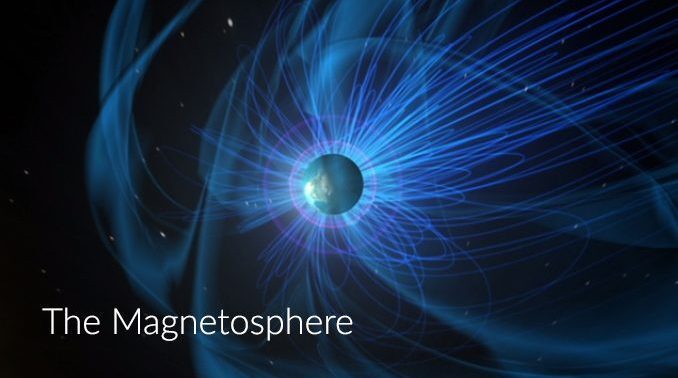
A Guide to the Magnetosphere
Earth’s magnetic field gives us a layer out in space called the magnetosphere. Here are some key points of the magnetosphere:
- The main role of the magnetosphere is that it deflects the most harmful solar rays shielding us from the sun.
- Without the magnetosphere, it would strip away Earth from its protective layers like the ozone layer.
- The magnetosphere impacts compass orientation, aurora borealis, and space weather.
- Earth’s magnetic field can disrupt GPS, communication networks, and electrical power grids.
- Earth isn’t the only celestial body that has a magnetosphere. Stars, moons, and planets have them too.
Let’s explore the magnetosphere in more detail.
Chapter 1. What is the magnetosphere?
The anatomy of the magnetosphere
We divide the magnetosphere into separate parts. Here are some definitions of the structure of the magnetosphere:
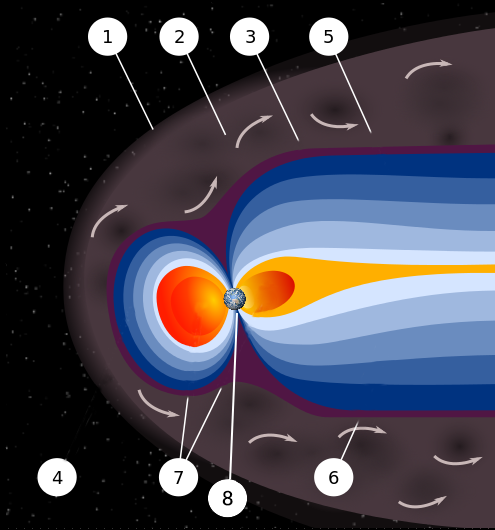
1. BOW SHOCK is the outermost layer of the magnetosphere.
2. MAGNETOSHEATH is the area between the magnetopause and bow shock.
3. MAGNETOPAUSE is where Earth’s magnetic field is in balance with incoming solar winds.
4. MAGNETOSPHERE extends as far 1000 Earths at the magnetotail side.
5. NORTHERN TAIL LOBE is at the magnetotail side where magnetic field lines point toward Earth.
6. SOUTHERN TAIL LOBE is at the magnetotail side where magnetic field lines point away from Earth.
7. PLASMASPHERE is the inner section of the magnetosphere that consists of low-energy electrically charged gas (plasma).
8. POLAR CUSPS funnel solar winds downwards like two holes in the magnetosphere at the poles.
MAGNETOTAIL is the night-side part of the magnetic field that isn’t compressed by solar winds.
The magnetosphere’s double bubble
What does the magnetosphere look like? A lot of people picture the magnetosphere as a bubble around Earth. But it’s more like two uneven bubbles split at the poles. Solar winds compress the magnetosphere on the daytime side.
But in the night-side direction, it’s shaped like a teardrop outwards much further. Earth’s poles are like a funnel where magnetic field lines touch down to Earth.
This funnel allows high-energy particles from the sun to race towards Earth’s ionosphere. As a result, we can see spectacular displays of light known as the aurora borealis.
Field lines beyond the moon
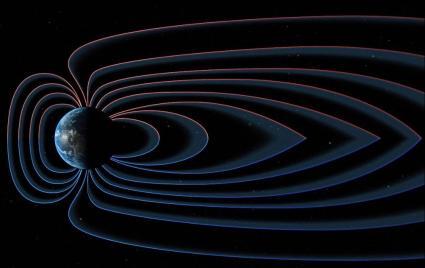
How far does the magnetosphere stretch? The magnetosphere has two sides. It has a sun-facing side and a night side (magnetotail).
On the sun-facing side, the magnetosphere fluctuates at 65,000 km or 6-10 times the radius of Earth. But on the night side, the magnetosphere stretches 6,300,000 km or 60 times the radius of Earth.
The magnetosphere also belongs to Earth’s atmosphere. If you look at the layers of Earth’s atmosphere, there is a significant overlap between the ionosphere and magnetosphere. In fact, the ionosphere is just the inner bound of the magnetosphere.
Chapter 2. What does the magnetosphere do?
1. Habitability
The magnetosphere allows life to exist on Earth’s surface. Without it, Earth would be exposed to cosmic and solar radiation from the sun. Magnetic fields bend particles. If you have dangerous high-speed particles from space, the magnetosphere deflects them like a shield from cosmic radiation.
This is why we still have an atmosphere surrounded by an ozone layer. This is key for habitable life. Like a bubble that surrounds Earth, the magnetosphere protects us from the fury of the sun.
Without the magnetosphere, the solar bombardment can strip Earth away from its protective layers – the ozone layer that shields it from UV rays. From space, the magnetosphere resonates field lines from the magnetic north and south poles.
2. Aurora Borealis
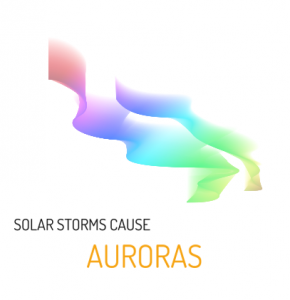
The aurora borealis (northern lights) is a light spectacle caused by trapped plasma in the ionosphere. During magnetic storms, the aurora flashes shades of pink, violet, green, and blue.
Each color shimmers based on the amount of oxygen and nitrogen in the atmosphere. In the sky, they look like curtains, depending on where electrons are located in the magnetosphere.
The aurora borealis dances in vibrant colors across the northern skies. Not only is it a scientific marvel, but it has historical significance in mythology for various cultures around the world.
3. Compasses point to the magnetic north
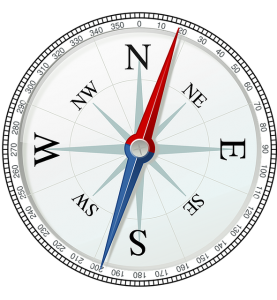
The Earth is one big magnet. When you pull out your compass, the needle responds to Earth’s magnetism. It does this by aligning itself towards field lines in the magnetosphere.
As you’ve already learned, these field lines are at the cusp where they converge at the poles. This is why compasses always point to the magnetic north.
Right now, the magnetic north is somewhere in the middle of the Arctic Ocean. But over time, the magnetic north hasn’t consistently pointed in the same direction. In fact, it can wander over 10 kilometers per year.
4. Bird migration
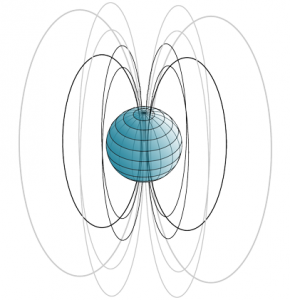
Birds use magnetic field lines to help orient themselves. The term is described as “magnetoreception” which gives the ability to perceive direction like a compass.
Scientists believe it’s from a special protein in the eyes of birds that enables the ability. It turns out that it’s not only birds that have this sixth sense. But wolves, bees, and worms also can navigate using Earth’s magnetic field.
This fascinating ability to sense Earth’s magnetic field is known as magnetoreception and continues to intrigue researchers.
5. Pole reversals
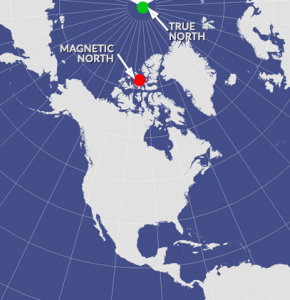
In Earth’s history, compasses didn’t always point to the north. They’ve changed from north to south. This means that Earth’s magnetic field has reversed with time.
On average, Earth’s magnetic north flips polarity every 250,000 years. But they don’t reverse at regular intervals. Instead, it’s very unpredictable.
Over the past 3 million years, the magnetic pole has reversed polarity 12 times. By looking at iron-rich rocks, we can see the history of pole reversals.
6. Space weather
The sun constantly releases plasma as solar winds. But it sometimes gives off a massive burst. We call it a coronal mass ejection. These solar flares hit the magnetosphere first and trigger an aurora borealis.
If they are powerful enough, they can even disturb satellites in space and electrical power grids. These disturbances are rare. But the magnetosphere is key to understanding space weather. If you understand space weather, then you can understand how it impacts us.
Chapter 3. Why does the Earth have a magnetosphere?
Inside Earth
Earth’s magnetic field is created by electric currents flowing in the core. If you look deep inside Earth, it’s not entirely solid. The core is almost all iron and nickel. But the outside core is actually liquid. We know this from using seismic tomography.
Because the Earth is spinning, its liquid iron is also spinning. It’s the fluid motion of liquid that makes it electrically conductive. Because the solid inner core heats the outer liquid layer, it produces convection currents. This creates the geodynamo that generates Earth’s magnetic field.
Geodynamo
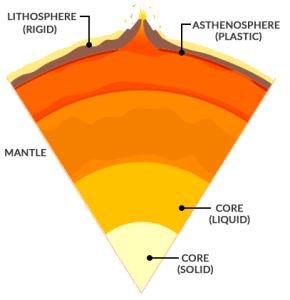
The geodynamo is the process by which any celestial body can generate a magnetic field. But it’s not only Earth that produces a geodynamo. For example, stars, planets, and moons can all have magnetic fields. Every geodynamo involves a rotating fluid.
It’s because the inner core rotates faster than the mantle, and the material is slightly electrically charged. It’s this active churning that enables the process of convection.
Not only do these convection currents affect heat flow within the planet, but the magnetic field it produces plays an important role in giving life on planet Earth. It gives us a layer out in space called the magnetosphere.
Chapter 4. What is magnetic reconnection
Incoming solar wind
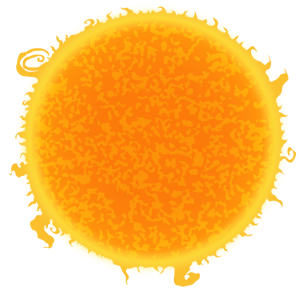
Coronal mass ejections (CME) from the sun release vast amounts of plasma into the solar system. Because the sun is so large, this plasma or charged particles occupy a large portion of our solar system. In fact, plasma makes up about 99.9% of the universe.
When plasma enters the magnetosphere in normal conditions, Earth’s magnetic field lines are relatively unaffected. This creates a rift where energy can enter our safe haven. These rifts open and close daily or even hourly.
Most are small and short-lived. Others are vast and sustained. Overall, the magnetosphere constantly reconfigures itself based on the amount of incoming solar wind.
Magnetic reconnection
But sometimes, the plasma released from the sun can break apart Earth’s magnetic field. This forces Earth’s magnetic field to realign into a different pattern called magnetic reconnection.
When rifts open, Earth absorbs incoming energy from solar winds. It explosively releases that energy with geomagnetic storms.
Magnetic reconnection can blast a tremendous amount of kinetic energy impacting space weather and communication systems on Earth.
Magnetospheric Multiscale (MMS) Mission
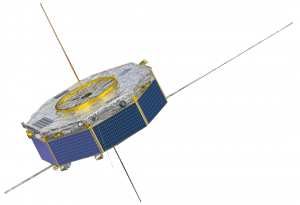
NASA’s Magnetospheric Multiscale (MMS) Mission hopes to find out the physics of magnetic reconnection. Orbiting in the magnetosphere, MMS tries to capture magnetic reconnection live as it happens.
Instead of looking from the outside, MMS will measure magnetic reconnection from a 4 satellite tetrahedral formation as it occurs. Specifically, each satellite will measure the magnetic field and movement of particles during magnetic reconnection.
The intention is to better understand what triggers particle acceleration and predict space weather patterns from magnetic reconnection.
Chapter 5. A look at the solar system
Earth isn’t the only celestial body that has a magnetosphere. Stars, moons, and planets have them too. Let’s explore the various magnetospheres in our solar system.

Mercury
Mercury has a magnetosphere. But it is about 1/100 as powerful as Earth. Planet Mercury has a very large iron core. Because it’s partly liquid, the fluid spins creating a weak magnetic field. But Mercury doesn’t spin fast. This is why Mercury has such a weak magnetosphere.
Venus
If you look at the properties of Planet Venus, they are very similar in terms of size, shape, and density to Earth. Venus and Earth are so similar that Venus is nicknamed Earth’s twin.
But one key difference is that Venus doesn’t have a magnetosphere. It’s because Venus spins so slowly that it doesn’t have enough fluid motion to create a magnetosphere on its own. And because its magnetosphere was too weak, this is why its atmosphere lost a lot of its water.
Our Moon
You will see two answers to whether or not our moon has a magnetic field. The first is that the moon lost its magnetosphere 3.5 billion years ago. The second answer is that our moon still has a localized mini-magnetosphere.
Scientists know this is true because they measure how much solar wind it deflects. Because it’s so small, this opens the question of whether or not other celestial bodies may have a localized magnetosphere that we don’t know yet.
Mars
Despite our interest in life on other planets, Mars doesn’t have a magnetosphere to protect itself from solar radiation. Possibly it’s because Mars’ core solidified and prevented an inner dynamo.
It’s believed Planet Mars lost its magnetosphere 4.2 billion years ago. Then, the solar wind stripped away most of Mars’ atmosphere, it lost a lot of its water and became the barren planet we see today.
Jupiter
Jupiter has the strongest magnetosphere in our solar system. It’s possibly larger than the sun’s magnetosphere extending to Saturn. Despite Planet Jupiter being mostly gas, its magnetosphere is likely generated from its quick rotation.
One full rotation is 9 hours long on Jupiter. If you look inside Jupiter, it has metallic hydrogen that acts like a liquid. This fluid motion is what generates a magnetic field on Jupiter. Then, every moon Jupiter has is protected from Jupiter’s strong magnetic field.
Jupiter’s moon Ganymede
Jupiter’s moon Ganymede hosts its own magnetic field. It’s not as large as other magnetospheres. But it’s a magnetosphere within Jupiter’s magnetosphere.
It could be because of its salty oceans under the surface that generates the magnetic field. It’s likely not an iron core because Ganymede doesn’t spin very quickly.
Saturn
Saturn has a magnetosphere and generates it in a similar way to Jupiter. Liquid metallic hydrogen inside Planet Saturn has a fluid motion. Rotation is about 10 hours on Saturn so this spin creates a magnetosphere surrounding it.
Saturn’s moon Titan
Titan is another place of interest for scientists because it has a thick atmosphere. It doesn’t generate its own magnetosphere. But it is believed that it is protected by Saturn. This is why Titan can still sustain a thick atmosphere with vital protection from solar winds.
Uranus
Uranus has a magnetic field. But it’s not generated by liquid metallic hydrogen like Jupiter and Saturn. Instead, it may be generated from convection currents within a salty ocean underneath. Planet Uranus is a frozen, gaseous planet with a molten core.
Its orbit is unusual. It rotates on its side facing the sun. So, its magnetic poles are not close to its geographic poles. They jump from place to place. It can even have 4 poles at times. Despite having a slower rotation, it’s enough to generate a magnetic field.
Neptune
Neptune is similar to Uranus. Its axis is off the rotation plane and has an unpredictable magnetic field. Similar to Uranus, it doesn’t generate a magnetic from deep within its core.
Instead, it’s about one-third down where salty ices of methane, ammonia, and water spin. These motions of fluids are what produce convection currents and a magnetosphere for Planet Neptune.
A Guide to the Magnetosphere
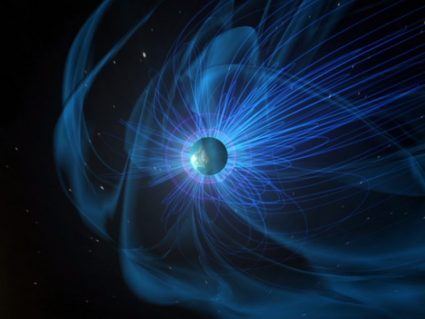
There are many different layers to our planet and one of these layers is the Earth’s magnetosphere. The Earth’s magnetosphere is a spherical electromagnetic sheath that surrounds the Earth and travels through space, protecting us from solar wind and cosmic radiation.
The magnetosphere is an invisible and delicate layer of energetic particles that surrounds the Earth in a bubble-shaped field.
Solar storms can affect the magnetosphere. It causes strong electromagnetic forces in the atmosphere (one of 10 types of forces). These storms may lead to disruptions in communications and electrical grids and even contribute to changes in our climate.

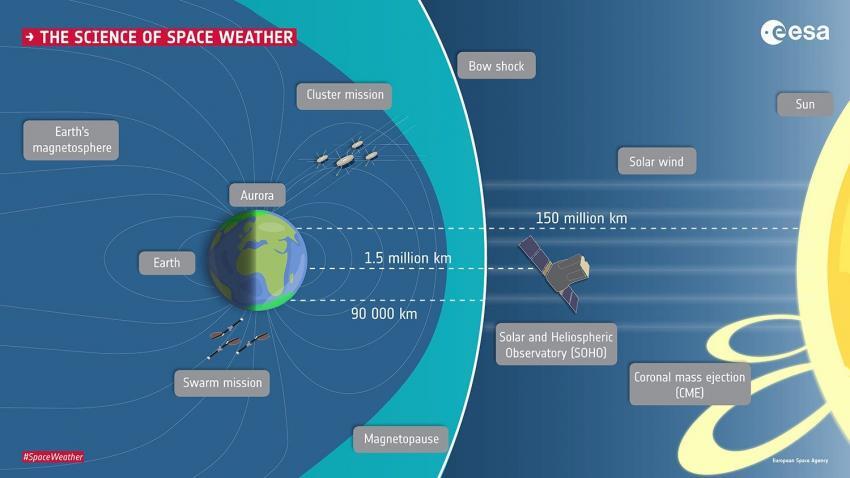


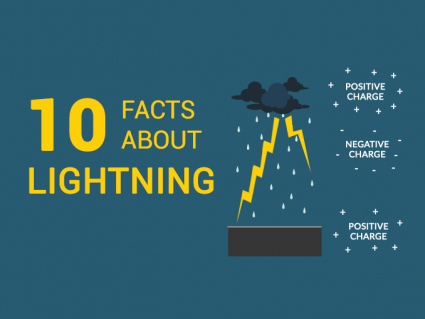
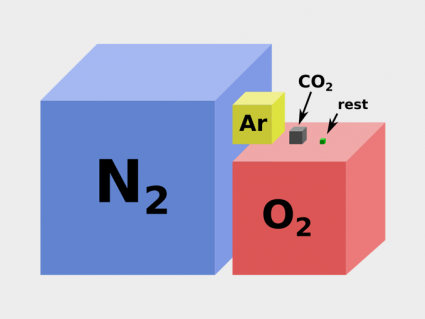
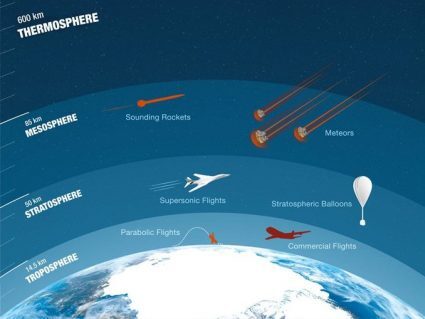
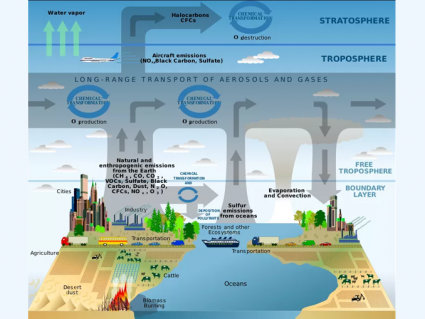

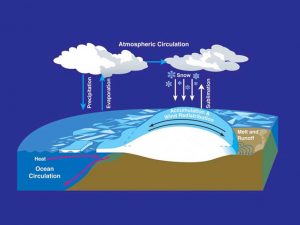
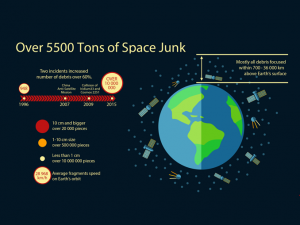

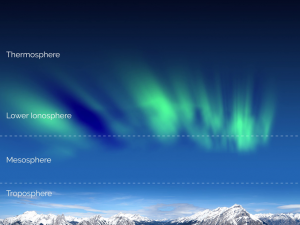
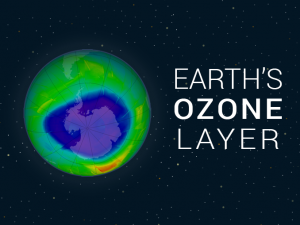
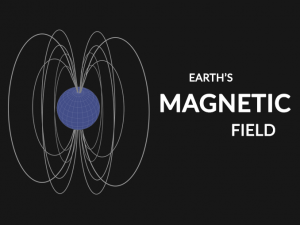

Informative articles!